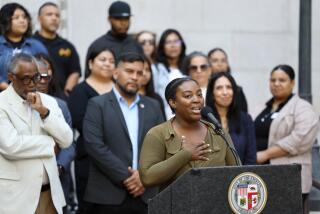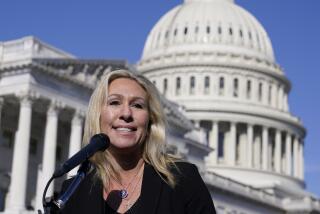âIâve now dipped into the pie.â Will COVID-19 change Americansâ views of the social safety net?

If you had posed the scenario to him as a hypothetical a few months ago â âYour company will be hemorrhaging cash, and youâll turn to Uncle Sam for emergency fundsâ â Jim Brady wouldâve confidently dismissed it.
âNever,â he said, âdid I think I would need government help.â
Brady, 69, started AToN Center, a luxury rehab facility in the hills of Encinitas, with his wife, Patricia, more than a decade ago and built it into a booming enterprise with nearly 70 full-time employees and a five-home campus with a saltwater pool, a sauna and 600-thread-count bedsheets.
But this spring, as the coronavirus charted its deadly path across the country, Brady decided to temporarily stop accepting clients from Washington state and the New York City area â two early hot spots â and capped client capacity at 12, instead of 30, so patients didnât have to share bathrooms.
âI went backwards about a half a million dollars in two months,â he said. Although his payroll was sinking him, he felt deeply loyal to his staff and desperately wanted to avoid cuts or furloughs.
Instead, he applied for a forgivable loan through the Paycheck Protection Program, part of the governmentâs initiative to help small businesses survive the pandemic, and received just over $800,000, which he used to cover two months of payroll.
That decision â asking for and then accepting federal funds â has prompted some reflection on his views about government aid, said Brady, who describes himself as âbasically Republican,â but doesnât always agree with the party leadership. For years, he felt frustrated by all the money skimmed from his take-home salary â it felt, he said, as if other people were sitting around and benefiting off of his earnings.
âIâm in the top tax bracket,â he said. âI didnât like that money going away.â
But now that heâs watched the positive ripple effect of having received the loan â how it helped him, his family, his employees and their families â his views of government assistance have started to evolve.
âI have a very different eye to that now. ... Iâve now dipped into the pie.â
As the pandemic presses into its six month and an expanding cohort of Americans personally benefit from their slice of the governmentâs $2.2-trillion stimulus bill, some political scientists, historians and experts believe that the COVID-19-era could shift the national discourse about the role Americans want government to play in their lives and ultimately lead to an expanded social safety net that more closely resembles those in other affluent nations.
âCOVID is such a potentially transformational experience,â said Martin Gilens, chair of the Department of Public Policy at the UCLA Luskin School of Public Affairs. âIf there is a broader reckoning with the failures of our government, then maybe that will extend to how we deal with inequality and poverty, and weâll be entertaining something that looks a little more like a European welfare state.â
While such a drastic widening of the safety net may sound far-fetched â and the scope and lasting power of any expansion remain to be seen â the health, economic and inequality crises currently plaguing the U.S. could well prove the most consequential since two previous eras of deep transformation in the U.S. â the 1930s and the 1960s.
As cities shut down and the economy began its devastating decline in March, President Trump signed into law a temporary relief package that increased funds for Medicaid, expanded eligibility for food stamps and mandated paid leave for some Americans who needed to take time off due to the virus.
Later that month, he signed a much larger emergency stimulus bill, known as the CARES Act, which created the small-business loan program, approved no-strings-attached checks of up to $1,200 for millions of Americans and added a temporary $600-per-week bump in federal unemployment benefits.
Still, unemployment soared and the nationâs gross domestic product cratered to a level not seen since the Great Depression. Then, late last month, the $600-a-week subsidy lapsed; Washington is still haggling over whether to restore it.
Evidence suggests that a broad swath of Americans are happy with the governmentâs beefed-up role in their lives.
A recent survey found that a vast majority of adults supported the stay-at-home orders, and four out of five respondents to a recent poll said they approved of the emergency stimulus bill. A majority of respondents also said that the next emergency bill should prioritize getting money to individuals and families over businesses or local governments.
But views on the topic will no doubt shift again when the economy improves, cautioned Gilens, who wrote âWhy Americans Hate Welfare: Race, Media, and the Politics of Antipoverty Policy.â
âDuring hard times,â he said, âthe public always becomes more sympathetic toward spending to help the poor.â
Over the last century, the size of the American social safety net, like those in many nations, has evolved drastically. When the flu pandemic of 1918 killed hundreds of thousands of Americans, the U.S. didnât have a modern federal safety net and relied instead on a patchwork of local programs and churches to feed and house people in need.
As part of New Deal reforms during the Great Depression, President Franklin Roosevelt signed the Social Security Act of 1935, which created old-age benefits for retired workers, established unemployment insurance and created the program eventually renamed Aid to Families with Dependent Children.
But, as it was crafted, the law excluded farm and domestic work â some of the main jobs held by Black people at the time.
âDiscrimination has always permeated social welfare in the United States,â said retired NYU associate professor Alma Carten, who has written extensively about how racism toward Black people shaped the framework of the American social safety net and still shapes perceptions of it today.
Public assistance in the U.S. is broken into two tiers, Carten said. There are the social-insurance programs, such as unemployment and Social Security, which workers or their employers pay into, and means-tested programs, such as food stamps. And the latter category, Carten said, is more stigmatized and âconsidered the doleâ â a distinction rooted, she says, in racism and in our nationâs work-hard-achieve-anything capitalist ethos.
âAmericans like to work for their money,â she said. âThey donât like to feel like theyâre getting something for nothing.â
But parsing out what is fair, and who deserves what, is subjective. And that very wiggle room helped lay the ground work for entrenched, racially stereotyped and often inaccurate views of who benefits most from government aid â a view that took hold in the 1960s, Gilens said, as news organizationsâ coverage of poverty shifted from white people in rural Appalachia to Black people in inner cities.
By the late 1970s, when Ronald Reagan was running for office, it was no longer almost exclusively white women benefiting from the Aid to Families with Dependent Children program, Carten said, but also some single Black mothers. On the campaign trail, Reagan regaled crowds with an anecdote about a âwoman in Chicagoâ â a Black woman, many of his listeners assumed â with 80 names, 12 Social Security cards and four fake, dead husbands with veterans benefits. Before long, the deeply exaggerated story of the unnamed woman had solidified into the racist trope of the âWelfare Queen.â
During his second term, Reagan signed a law that tightened eligibility requirements for the Aid to Families with Dependent Children program. But it was President Clinton, vowing to âend welfare as we know it,â who got rid of the program altogether in 1996 and replaced it with a much more restrictive program that put a five-year lifetime cap on such benefits.
Fourteen years later, President Obama signed into law the Affordable Care Act â the broadest expansion of subsidized health coverage in decades, which, although deeply polarizing at the time, has since garnered the support of a majority of Americans.
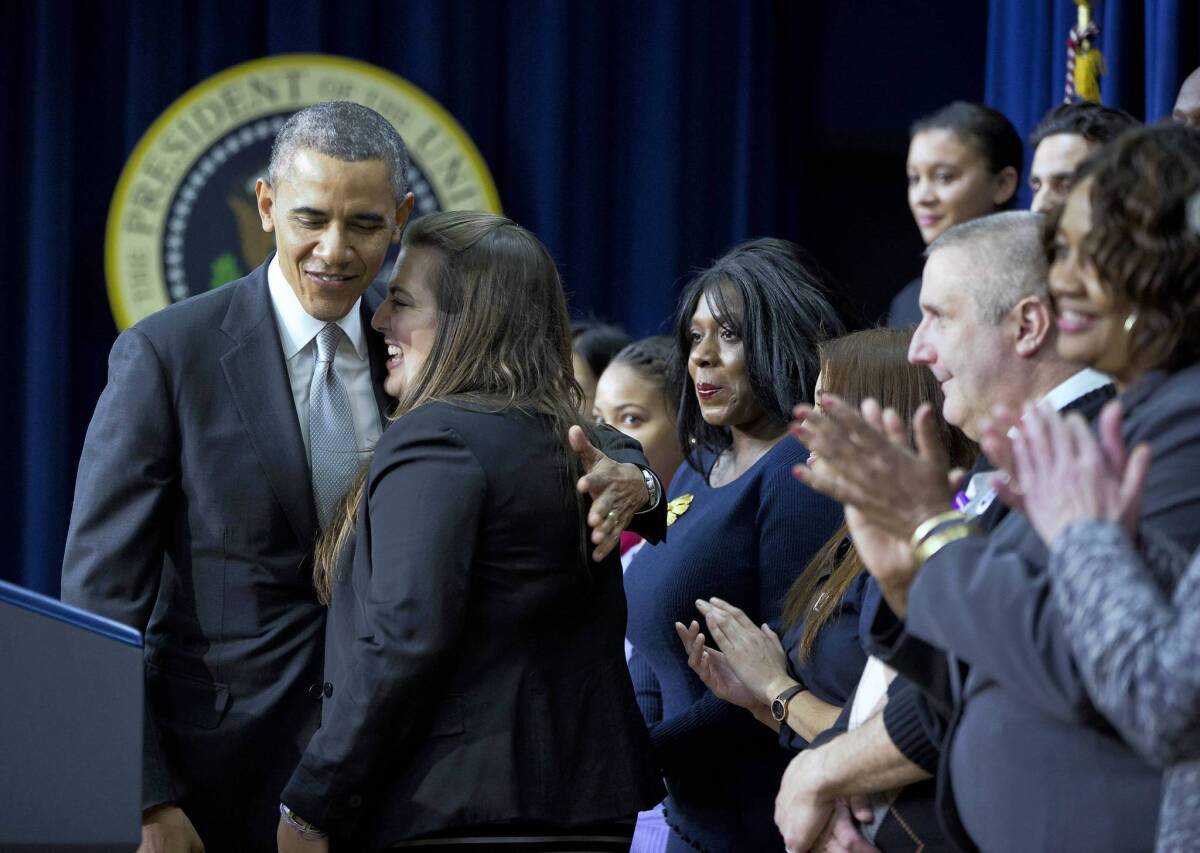
âAmerican social welfare policy is complicated,â Carten said. âWe make a distinction between people who are âworthyâ and who are âunworthy.ââ
***
Under Trump â a loud advocate for welfare reform â federal officials last year announced a plan to tighten eligibility for food stamps for adults without dependents, a move that was expected to cut benefits to nearly 700,000 Americans. Initially the administration intended to push ahead with the plan even during the pandemic, but eventually decided to hold off after losing a court challenge in mid-March.
Two weeks later, with the economy in free fall, Trump signed the CARES Act, which included the $600-a-week unemployment subsidy.
That provision became a lifeline for Michail Sklansky.
Before the pandemic, Sklansky was making $22 an hour working in the editorial department at the L.A. Philharmonic. It was part-time work, which meant no medical coverage, but he felt grateful to have found fulfilling work compiling program books for shows at Disney Hall and the Hollywood Bowl after the record company he worked at for years was bought out.
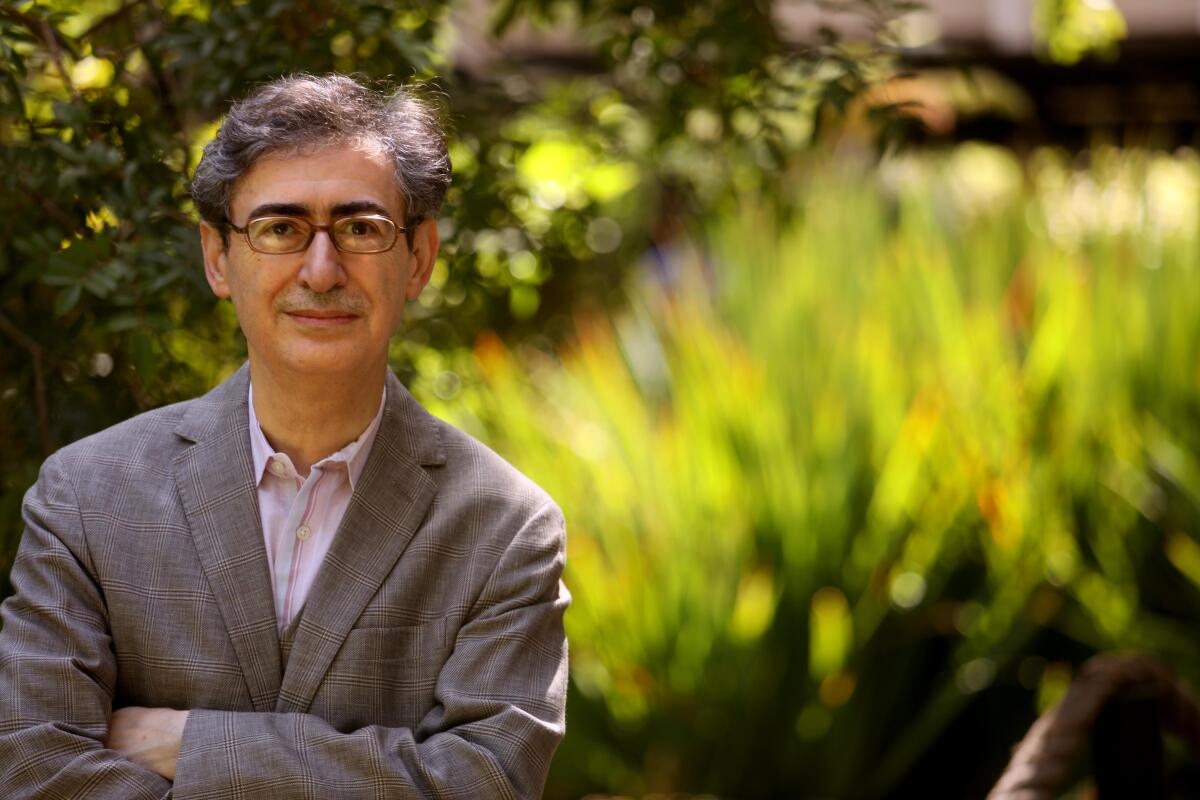
But in April, with shows on hiatus, he got laid off.
Sklansky speaks a half-dozen languages and has a broad skill set, but at 62 heâs learned what it feels like to be passed over for jobs heâs qualified for â and that was before the pandemic. So he signed up for unemployment and continued his job search. He updated his resume and LinkedIn profile, researched interview tips and submitted dozens of applications for administrative jobs, as well as some in film and TV licensing.
When you apply online, he noticed, you can sometimes see how many other people have already submitted applications for the same job. In one instance, it was more than 500 people. So far, he hasnât gotten a single follow-up call.
On a recent afternoon â the day the $600 federal subsidy lapsed â Sklansky was listening to the news religiously, hoping to hear about a funding extension. If one didnât come through soon, he said, he planned to start making deliveries for Ralphs or Instacart.
âItâs nail-biting.â
In California alone, more than $68 billion in loans have been handed out to some 580,000 companies â a no-industry-spared list that includes limousine corporations, two-dozen companies with âluxuryâ in their name and more than 1,000 dentistsâ offices. Somewhere in the middle of the list, in the section of companies that got at least $350,000 but less than $1 million, youâll spot a Santa Ana-based think tank: the Ayn Rand Institute.
In a video message posted on the nonprofitâs website, the president of the institute, which advocates âending the welfare state,â defended the decision to accept the federal loan by comparing it to a robbery victim accepting a restitution payment.
âIf the government offers to return some of the money taken from us by force,â the president said, âeach of us is entitled to reclaim some of what was taken.â
Another chunk of loans went to Californiaâs agricultural industry.
Early in the pandemic, Matthew Efird, a fifth-generation farmer who grows almonds, peaches, raisins and pistachios on a farm south of Fresno, carefully monitored his slipping profits. The slowdown in sales to shuttered restaurants and the continued impact of retaliatory trade tariffs China has imposed on many goods from the U.S., including almonds, created what Efird called âa perfect storm.â
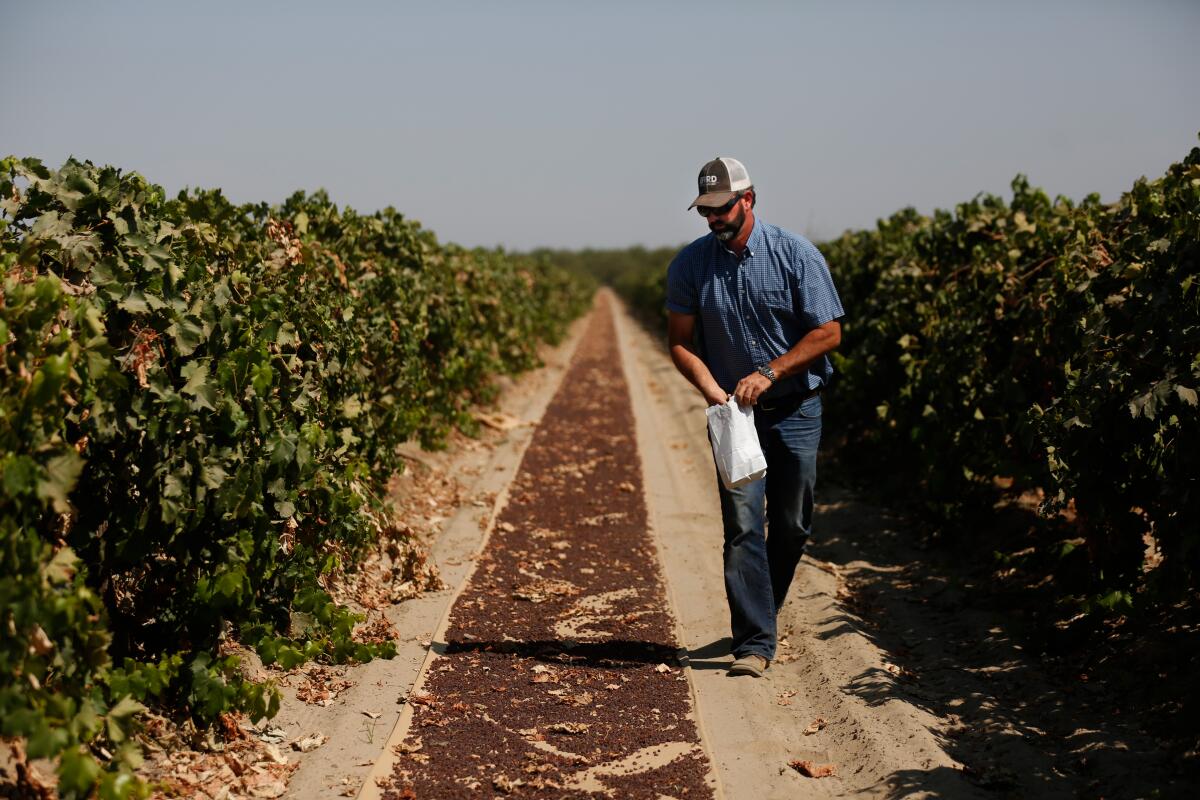
His companies, Double E Farms and Efird Ag Enterprises, both applied for and received loans in the smallest category, less than $150,000, Efird said, adding that although he and his wife both got stimulus checks, theyâd decided to donate them to nonprofits.
In the past, Efird said, he has gotten state and federal grants through agricultural equipment-replacement and irrigation-efficiency programs, neither of which, Efird noted, he viewed as a handout.
âI think thatâs completely different than traditional welfare,â he said. âWe pay into these programs with our tax dollars.â
***
The way the CARES Act was written, not everybody will benefit from it, at least not equally, said UCI law professor Mehrsa Baradaran, who recently wrote a piece for the Atlantic arguing that America has a longtime obsession with keeping aid from people viewed as undeserving.
For example, she said, the government included restrictions intended to bar strip club owners and some people with felony records from receiving small-business loans. (Neither restriction has proved fully enforceable, however, after business owners and civil rights groups sued the government.)
The exemptions are hypocritical, Baradaran said, especially when compared with bailouts of corporations, such as Boeing, or big banks, in spite of past wrongdoing.
âI mean, talk about felonies, right?â she said. âThe banks have committed crimes of moral turpitude and they hardly get cut off from profit.â
Back at AToN, Bradyâs facility in Encinitas, life has slowly returned to something a little closer to pre-pandemic normalcy.
Because the rehab facility now gets COVID-19 test results back in two or three days, it can confidently admit new clients knowing they donât have the virus. Theyâre still not at their usual capacity, Brady said, but on a recent weekday they were back up to 18 clients.
At one point during the worst of it, he said, they were down to two clients, and his staff of psychologists, counselors and round-the-clock registered nurses started sorting out cabinets to stay occupied.
Brady was desperate to keep his core clinical team, some of whom had worked for him for eight years. In an industry that sometimes attracts bad actors, it can be hard to find trained, ethical employees, said Brady, who is on the board of the Addiction Treatment Advocacy Coalition.
âGod, I canât let people go,â Brady thought.
He feels deeply fortunate that he didnât have to, even if it meant asking the government for help.
âI never thought I would need it,â he said, pausing for a few seconds, âbut I really did.â
More to Read
Sign up for Essential California
The most important California stories and recommendations in your inbox every morning.
You may occasionally receive promotional content from the Los Angeles Times.
